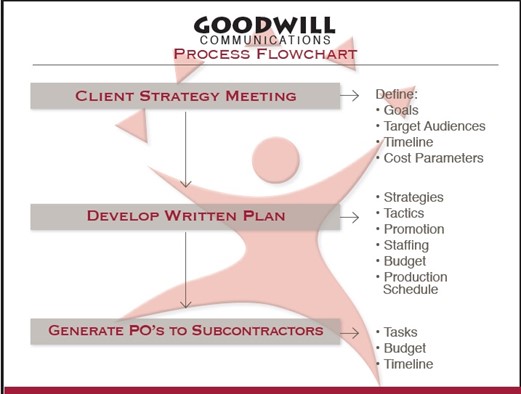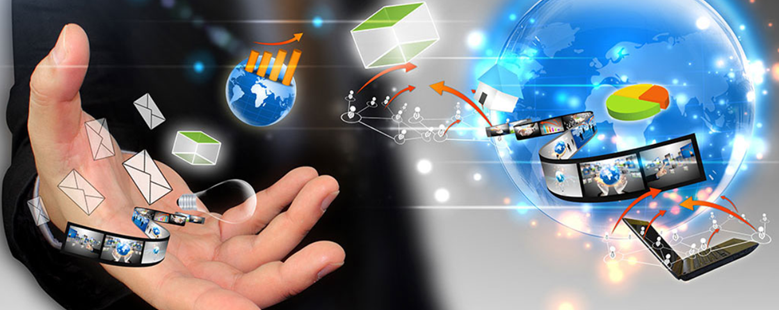As a non-profit executive, you must grapple with ways to increase your donor base, recruit volunteers, and educate your key audiences about your organizational issues. Launching a strategic public service advertising campaign is one way to accomplish all three of these goals. Unquestionably, a well-orchestrated PSA campaign can help increase visibility for your non-profit and few would argue that it is easier to raise money for an organization that is well known compared to one that is not.
PSA Advantages
There are several factors which favor public service advertising over other marketing tactics your non-profit might deploy:
- The media donates media time and space
- Ability to use existing content from other video projects
- Geotargeting with outdoor advertising
- Using evaluation data to support the PSA investment
Competition for donated media time and space is getting more intense, but there are positive trends which benefit non-profits if they know how to navigate the PSA environment. These include:
- Most radio and television stations are committed to around the clock programming, meaning there is a substantial amount of unsold airtime to fill
- Tighter production budgets mean that many TV and radio stations need to use material produced externally to fill unsold time slots
- Outdoor advertising companies do not want their billboards to be blank for extended periods of time because they lose their sales leverage
- There has been an explosion in new media opportunities over the past decade, providing more placement opportunities for PSAs
Data from our evaluation system indicates that 1,091 or 76% of all U.S. TV stations regularly use national PSAs, but to get your messages on the air you need to do everything right. Media outlets are unquestionably becoming more demanding about the types of PSAs they use, and you need to have a solid plan to get free media exposure for your issue.
Developing Strategies
 To be successful in today’s competitive PSA environment, there are several basic, but important strategies non-profits should include in their PSA executions.
To be successful in today’s competitive PSA environment, there are several basic, but important strategies non-profits should include in their PSA executions.
Step 1: Develop separate creative messages for each medium
- Create high-quality, high impact campaign materials that communicate your message very quickly and clearly.
- Television, for example, is best employed to communicate a single idea quickly. TV spots should maximize visual impact via the highest possible “production values,” rather than “talking heads,” or less interesting visual formats.
- Radio PSAs should be professionally produced using interesting sound effects, and outdoor PSAs should be designed to communicate a brief message in only ten seconds or so, as there is minimal linger time.
- You also need to provide the media as much flexibility as possible by sending your PSAs in various spot lengths and outdoor ad sizes.
Step 2: Develop a comprehensive distribution plan
- Each medium has strengths and weaknesses, and since the PSA producer cannot control timing, frequency and placement, it is important to use a broad media “mix.”
- While television has the greatest reach for creating widespread general awareness of a social issue, it does not allow specific audience targeting. Radio, on the other hand, is audience-specific, and can provide excellent penetration of smaller markets. Its portability – particularly in summer when more people are out of home- is another advantage. Radio, on the other hand, is audience-specific, and can provide excellent penetration of smaller markets. Its portability – particularly in summer when more people are out of home- is another advantage.
- Due to the wide variety of outdoor platforms, it can provide excellent targeting opportunities reaching people on the road, at work, or shopping.
Step 3: Promotion/Distribution
The third part of the strategic PSA plan is to employ aggressive promotion and marketing techniques designed to make the PSA materials intrusive and memorable. In the new era of digital distribution, promotion assumes a key function because if the media does not know where or how to download your PSAs, then obviously they will not be used.

To provide more campaign background on the client’s issue, we use a variety of tactics to ensure the media knows where to download PSAs which include:
- Posting TV and radio PSAs to three platforms – our PSA Digital site, to the National Association of Broadcasters’ Spot Center and Extreme Reach, the nation’s premier digital distributor of media assets.
- Sending blast emails and direct mailers to inform the media where to download client PSAs

Step 4: Evaluation
The next important strategic step is to evaluate campaign impact and use evaluation data to fine-tune subsequent PSA strategy.
A.C. Nielsen’s SIGMA electronic tracking system provides non-profits with accurate and timely feedback on TV PSA usage, including the stations using PSAs, their location, usage by spot length, frequency, and estimated value.
Getting feedback on PSA usage is only half the battle, however. Tracking usage just for the sake of collecting data is a meaningless exercise unless you learn something from the data and use it to change future decision-making. It is very important to carefully analyze the data to determine where your usage is strongest and areas where exposure may be minimal or non-existent.
For those media outlets that used your PSAs, you should send them a Thank You note or perhaps a letter from your management which will pave the way for future usage. In those areas where improvements are needed, you can make phone calls to stations, have your local reps contact gatekeepers, or send reminder postcards to increase usage.
Given the current situation, the competition for donated media time and space is likely to get more intense. This, in turn, will force non-profits to become more competitive, accept reduced levels of public awareness, or seek new methods of generating exposure for their issue. By developing PSA plans that combine hard-hitting creative, imaginative distribution and using evaluation data to improve performance, non-profits can get valuable media exposure at minimal cost.
Bill Goodwill is Founder of Goodwill Communications, a firm specializing in PSA distribution and evaluations.







Leave A Comment